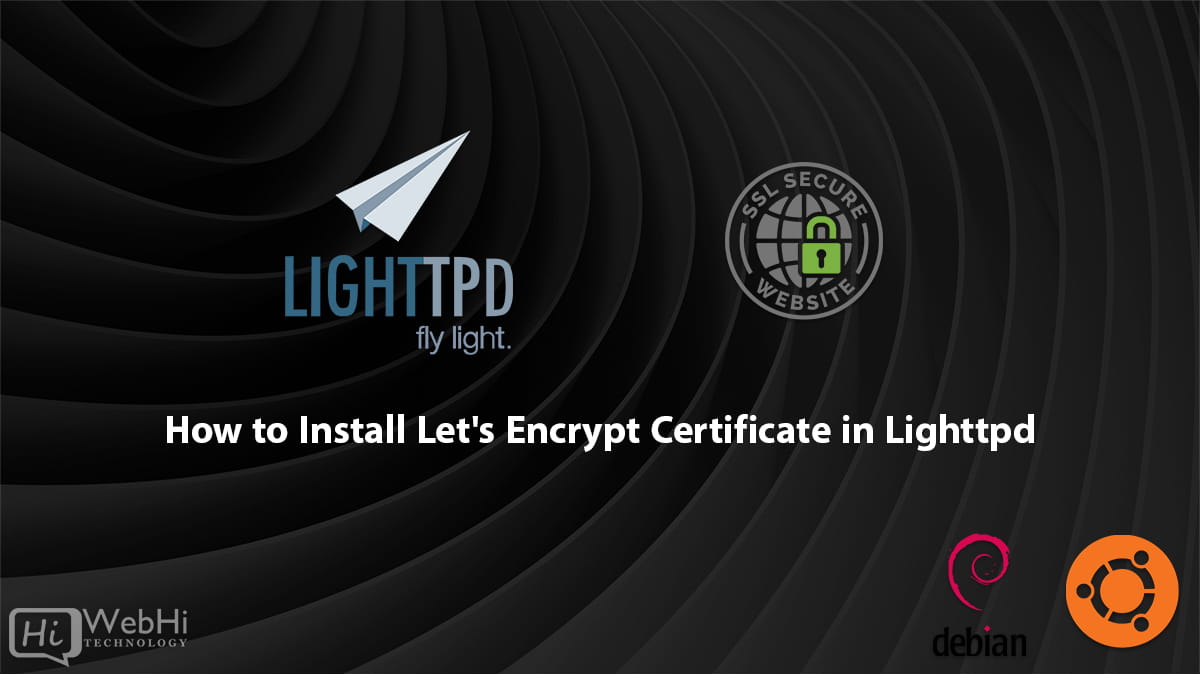
In today’s digital landscape, securing your website with SSL/TLS encryption has become essential. Let’s Encrypt, a free and open certificate authority, provides an easy and automated way to obtain and install SSL certificates. In this article, we will guide you through the process of installing a Let’s Encrypt certificate in Lighttpd, a lightweight and efficient web server.
Prerequisites
Before we begin, make sure you have the following prerequisites in place:
- A running instance of Lighttpd on your server.
- A domain name associated with your server’s IP address.
- Shell access or SSH credentials to your server.
Now, let’s dive into the steps required to install a Let’s Encrypt certificate in Lighttpd:
Step 1: Install Certbot
Certbot is a command-line tool provided by Let’s Encrypt for obtaining and managing SSL certificates. We need to install Certbot on our server.
You can follow this Tutorial on How Setup Let’s Encrypt SSL on Ubuntu 20/18/16 LTS.
Step 2: Obtain SSL Certificate
Now that we have Certbot installed, we can proceed with obtaining the SSL certificate for your domain.
- Stop the Lighttpd service:
$ sudo systemctl stop lighttpd- Run the following command to obtain the certificate:
$ sudo certbot certonly --standalone -d your-domain.comReplace your-domain.com with your actual domain name. Make sure the command executes successfully, and the certificate files are generated.
- Start the Lighttpd service:
$ sudo systemctl start lighttpdStep 3: Configure Lighttpd for SSL
With the SSL certificate in place, we need to configure Lighttpd to utilize the certificate for secure connections.
- Open the Lighttpd configuration file:
$ sudo nano /etc/lighttpd/lighttpd.conf- Add the following lines to the configuration file:
$SERVER["socket"] == ":443" {
ssl.engine = "enable"
ssl.pemfile = "/etc/letsencrypt/live/your-domain.com/fullchain.pem"
ssl.privkey = "/etc/letsencrypt/live/your-domain.com/privkey.pem"
}Replace your-domain.com with your actual domain name.
- Save and exit the file.
- Restart the Lighttpd service for the changes to take effect:
$ sudo systemctl restart lighttpdStep 4: Automate Certificate Renewal
Let’s Encrypt SSL certificates have a validity period of 90 days. To ensure uninterrupted SSL protection, we should automate the certificate renewal process.
- Open the crontab for editing:
$ sudo crontab -e- Add the following line at the end of the file:
0 0 * * * certbot renew --quietThis instructs the system to automatically renew the certificates daily at midnight.
- Save and exit the file.
Step 5: Test SSL Configuration
Now that everything is set up, it’s time to test our SSL configuration.
- Open your web browser and enter your domain name with
https://prefix (e.g.,https://your-domain.com). - If the SSL installation is successful, you should see a padlock icon or a similar indication of a secure connection in your browser’s address bar.
Congratulations! You have successfully installed a Let’s Encrypt SSL certificate in Lighttpd. Your website is now secured with encrypted communication.
Conclusion
Securing your website with SSL/TLS encryption is crucial for protecting sensitive data and gaining user trust. Let’s Encrypt simplifies the process by providing free and automated SSL certificates. By following the steps outlined in this article, you can easily install a Let’s Encrypt certificate in Lighttpd and enhance the security of your website. Enjoy the benefits of a secure and encrypted browsing experience!

5 thoughts on - Install Let’s Encrypt SSL Certificate in Lighttpd
and disabling 80 ?
To Force HTTPS redirect you can add this bloc.
$SERVER["socket"] == ":80" {
$HTTP["host"] =~ "(.*)" {
url.redirect = ( "^/(.*)" => "https://%1/$1" )
}
}
How to install on virtual hosts? What is I don’t have a main server name to use with the server socket setting pen?
There’s no supported way to install SSL certificate for multiple domains on lighttpd.
For this you need to use another solution like Apache or nginx.
yes there is, I just did! simply add another $HTTP host, which is the second domain name, using a different port. Then you just need certbot to make a certificate for that 2nd domain. Finally, under the $SERVER socket 443 just add your second domain as another $HTTP host block